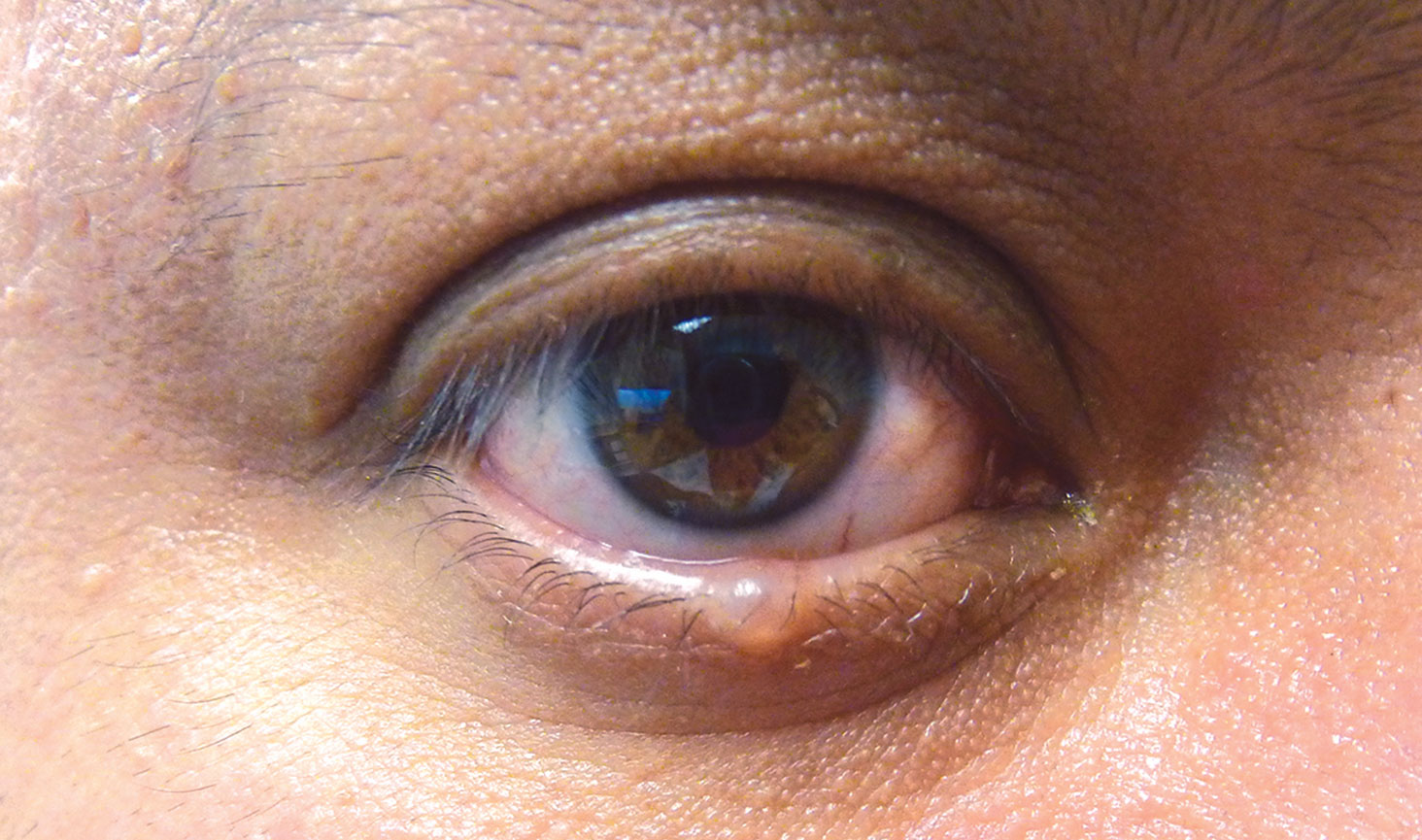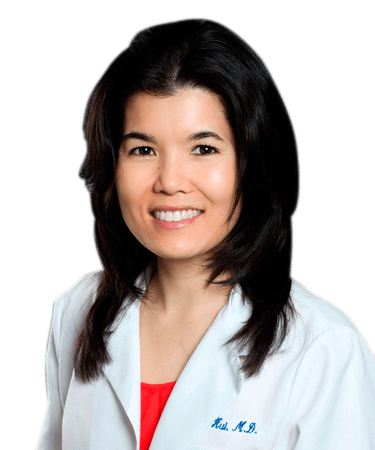https://deserthealthnews.com/story/eyelid-lumps-and-bumps/
he eyelids are delicate structures meant to protect the eyes. Like all skin, they are prone to various lumps and bumps that leave us wondering, “Is this something to worry about?”

Sebaceous cell carcinoma. This subtle lesion was present for two months prior to presentation. It gave the appearance of “thickening” of the inner side of the left lower eyelid margin.
Areas of concern may appear gradually or seemingly suddenly. They may be quite obvious or very subtle. An exam by a physician is the optimal way to determine the best course of action. Lumps and bumps may range from benign things such as cysts and chalazia (internal styes) to malignant lesions such as basal cell carcinoma or sebaceous cell carcinoma. Each has characteristic findings that help to form a diagnosis on examination.
Key factors the physician will consider are:
- How long has it been present?
- Is it painful?
- Has it caused any bleeding or crusting?
- Has it caused distortion of the eyelid or loss of lashes?
A chalazion or stye occurs when the oil glands in the eyelid become blocked. The oily secretions build up, causing redness, swelling, tenderness and a palpable lump. It is best to begin warm water compresses to try to alleviate the blockage. The lump may resolve with this conservative therapy. If it persists, a short office visit to drain it may be needed. Occasionally, oral antibiotics may be needed as well.
A cyst forms when an infolding of the outermost layer of skin develops. The cyst becomes a self-contained “balloon” and expands as the skin cells shed debris or even fluid. These usually enlarge gradually over time. They may resolve spontaneously, but often will require an office visit for removal if bothersome to the patient.
Solid lesions may be benign or malignant. Benign entities include nevi (moles), sebaceous (oily) cysts or inflamed growths. These are benign and are generally characterized by gradual enlargement, chronicity (sometimes present for many years), with little or no eyelid distortion (no loss of lashes, no bleeding or crusting).

A large nodular basal cell carcinoma of the right lower eyelid margin (region of eyelash growth). Note the irregularity of the margin surface, diffuse loss of eyelashes and roughened contours.
Benign lesions may be difficult to discern from malignant entities. More concerning findings include madarosis (loss of eyelashes), destruction or erosion of the eyelid skin or margin (where the lashes emerge), bleeding, crusting, or non-healing areas. Early malignant lesions may even have a number of characteristics typically found in benign conditions.

Eyelid cyst in the central portion of the right lower lid margin. The lesion has a bubble-like appearance and is fluid filled. It causes some distortion of the lash margin, but reassuring signs include the presence of eyelashes and lack of surface erosion.
If the diagnosis is uncertain, removal and biopsy are often indicated. The lesion will be sent to the pathologist for analysis to determine the cause. Biopsy is the procedure of choice to determine the exact nature of a lesion.
If a skin cancer is discovered, surgical removal is needed. The eyelids are very delicate and lack any “extra” skin, so removal of cancer must be weighed against leaving enough tissue for reconstruction. The removal may be undertaken with either a dermatologist specializing in the Mohs technique or by an eyelid surgeon. Reconstruction focuses on restoring proper anatomy and function to the eyelids, as well as a cosmetically desirable outcome. It is difficult to create a “new” eyelid but with the array of surgical techniques available, patients enjoy a satisfying outcome.
Dr. Hui is the founder of The Eyelid Institute in Palm Desert. She is an Oculoplastic surgeon and has a special interest in helping patients with eyelid, lacrimal and orbital conditions. An Oculoplastic surgeon is a physician with combined training in Ophthalmic Plastic and Reconstructive Surgery (Oculoplastics) and Ophthalmology who has unique abilities to perform a variety of delicate procedures around the eyes. Dr. Hui can be reached at (760) 610.2677.





